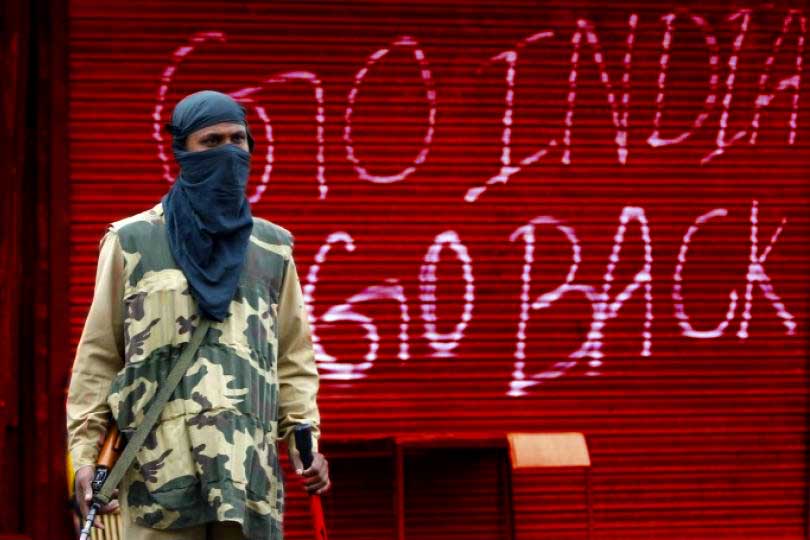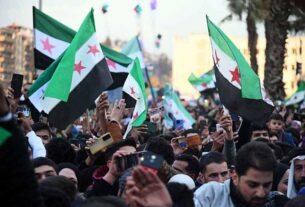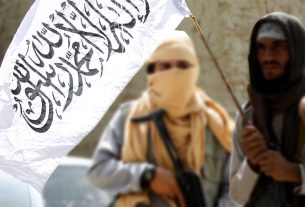No Kashmiri will ever accept the abrogation of Kashmir’s autonomy.
On June 11, 2010, I came face to face with the sad and violent reality of my homeland, Kashmir, for the first time in my life. I was leaving my tuition centre in the downtown area of the capital Srinagar when I heard shots. Within minutes panic took over the street and hundreds of students started running in all directions to find cover.
As I looked for somewhere to hide, I saw the body of a young man lying motionless on the ground. He was covered in blood and his eyes were firmly shut. I knew he was dead.
Later, I learned that the body belonged to Tufail Mattoo, a 10th-grade private school student from Srinagar. He had been killed by a tear gas canister fired at close range by Indian soldiers.
The troubles had started in May when the Indian police killed three unarmed villagers near the Line of Control, claiming that they were “terrorists” who had sneaked in from Pakistan. Kashmiris took to the streets to voice their anger, and the police responded with even more unlawful violence. Within a matter of months, they killed over 100 people, many were young students.
Like millions of other Kashmiris, I spent the summer of 2010 trapped inside my house with my family. There was a curfew; anyone who dared break it to protest faced the risk of being injured or killed in the street.
At the end of the summer, the curfew was lifted and the Indian government and its news channels told us that “peace” had returned to the valley. Our lives were supposedly “normal” again.
But life was not back to normal for me. Something had changed fundamentally. Tufail’s murder was my first tangible experience of the violence of Kashmir’s conflict. I was, of course, aware that since my childhood we had never really lived a “normal” life, but this was the first time that I witnessed bloodshed first-hand. This was the first time that I realised the kind of threat I was facing as a young person in Kashmir.
This is exactly when I, a child, started to question the Indian State’s behaviour and, in fact, its security presence in Kashmir. I finally had an answer to the question I had been asking myself: Why do we want azaadi (freedom)?
And I was not the only one who came face to face with the reality of Kashmir in 2010. An entire generation witnessed India’s brutality, which sowed the seeds of rejection and resistance.
One summer evening that year, a group of Indian officers beat and humiliated three Kashmiri teenagers for no reason other than entertainment. After the incident, one of the boys vowed revenge. A few weeks later, the 15-year-old left his home and joined an armed rebel group. His name was Burhan Wani.
Some six years later, in 2016, Indian security forces killed Burhan.
By then, he had become a popular rebel commander and one of the most recognised faces of the Kashmiri armed struggle. Wani’s death triggered widespread demonstrations across the valley for five months, during which more than 100 protesters were shot dead by Indian forces.
In the aftermath, I talked to my grandfather, All Parties Hurriyat Conference (APHC) leader Syed Ali Shah Geelani, at his home, where he has been under house arrest since 2010. “India is responsible for the creation of Burhan and all the other youngsters who choose to pick up guns as a mean of resistance against India,” he told me.
Burhan was not the only young boy to join the ranks of the militant groups in Kashmir in 2010. Scores of others, mostly from south Kashmir, did the same thing. India’s brutality and oppression had encouraged them to do so. And when Burhan himself was killed, this encouraged a new generation of Kashmiris to take up arms against their oppressors.
Meanwhile, the Indian government also launched a campaign to suppress the leaders of peaceful protests. My father, Altaf Ahmad Shah, a pro-freedom APHC leader, was arrested in 2017, along with a number of other Kashmiri leaders.
This was despite their public rejection of militancy.
“This is not what we should be doing. It is like committing suicide,” my father would tell me whenever the complex issue of armed resistance came up in conversation during my childhood. When I asked him what other options the people of Kashmir have to resist the occupation, he would say, “We have to fight peacefully. We have to raise our voice in whatever way possible.”
My father was charged with sedition and “conspiring to create a war against India” and was taken to the Tihar Jail in New Delhi, where he remains till today.
To anyone following the systematic oppression of Kashmir, it was clear that these arrests were yet another attempt by the Indian government to crush the voices that guide Kashmir’s struggle for freedom.
Today, I view these arrests as the first step in India’s long-term plan to abrogate Kashmir’s autonomy. The Indian authorities did so in order to subdue any peaceful resistance before it even started.
In August, the Indian state unleashed its brutality on the people of Kashmir yet again. Living abroad now, I had to watch in pain how my people disappeared from the face of the earth. It’s been more than a month now that Kashmir has been under a full media and communications blackout as the ruthless crackdown continues.
It has been 40 days since I have spoken to my mother. I have news from neighbours who flew to New Delhi from Kashmir and informed me that “everyone at home is fine” and sent me recorded video of my mother, in which she asked me to stay strong.
All this violence and the decision to deny Kashmiris their right to self-govern will have an unexpected side effect: They will make separatism even more mainstream in Kashmir.
Over the years, India had significant support from local Kashmiri political parties such as the National Conference (NC) and the People’s Democratic Party. But today, even those who once swore by the Indian constitution are behind bars or under house arrest. Not that those parties ever truly represented Kashmiri people or their sentiments, but at least India had some people they could have dialogue with.
Now, by going after all Kashmiri leaders – including the ones who wanted to work with India – the New Delhi government killed any chances it had to have a constructive dialogue with Kashmiris.
I have young Kashmiri friends who once considered themselves Indian at heart. Now, they appear to have changed their minds.
A friend who once posted a picture with NC head Farooq Abdullah on her social media calling him the “best leader of Kashmir”, now says that she holds all mainstream leaders of Kashmir responsible for what happened on August 5. “All of them have sold out and we have nothing left to do,” she told me.
Year after year, India is making sure that the new generations of Kashmiris witness and experience the brutality of the occupation firsthand and, by doing so, it is creating new waves of resistance among Kashmiri youth. They will probably never agree to negotiate with India on anything less than freedom.
Since the events of 2010, every year we have read headlines like, “Kashmir to witness another violent year” or “Kashmir on the boil again” or “Kashmir may face turmoil again”.
This year, too, an uprising is expected. However many troops the Indian government sends in response, it will not be able to quash Kashmiri resistance. No Kashmiri would ever accept what it did on August 5.
ABOUT THE AUTHOR
The statements, views and opinions expressed in this column are solely those of the author and do not necessarily represent those of Independent Press.
-Source: Al Jazeera
Think your friends would be interested? Share this story!







